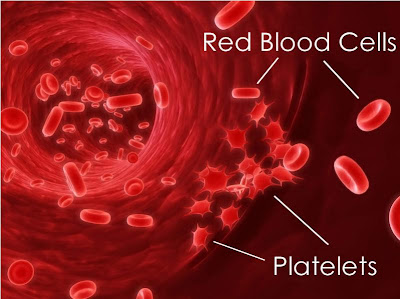PLATELET DONATION
Become a platelet donor!
If you've donated blood before, you know that you've made a tremendous difference for the hospital patients who received your blood. You can take that feeling one step further by donating platelets. Many hospital patients need platelets to survive. By donating platelets, you provide an invaluable gift of life.
Why are platelets needed?
Blood is made of four components: platelets, plasma, red blood cells and white blood cells. The platelet component is necessary to control bleeding. Patients undergoing chemotherapy and radiation treatments are unable to produce enough platelets. Without platelet transfusions, life-threatening hemorrhages could result.
History of plateletpheresis
Until recently(page update=year 2000), the only way to collect enough platelets for a single transfusion was to take units of blood given by 5 to 10 donors, separate the platelets from the other blood cells using a centrifuge and combine the platelets.
Today, sophisticated medical equipment-blood cell separators-can collect enough platelets for a transfusion from a single donor. The separator automatically removes platelets from the blood you are donating and returns the rest of the blood to you.
It is a simple, safe process-very much like a regular blood donation
Who receives platelets?
Most patients undergoing a bone marrow transplant, surgery, chemotherapy, radiation treatment or organ transplant need donated platelets in order to survive. A platelet recipient could be a family member, friend, neighbor, acquaintance or stranger. Your donation can save a life.
How are platelets donated?
By using a special method called apheresis (ay-fer-ee-sis), whole blood is separated into components, and the platelets are removed. Specially trained Red Cross nurses and staff conduct the procedure while you relax, watch TV or read. The entire process takes about two hours.
Who can donate?
You can continue to give whole blood in addition to platelets. You must be healthy, meet medical requirements and be willing to share your good health with a seriously ill patient. There is no possible way to contract any disease, including AIDS, by donating platelets or whole blood. All needles and containers are sterile, used only once, and then carefully discarded. Because platelets are quickly replenished by your body, you can give platelets up to 24 times a year. Your area blood bank staff will work with you to schedule a convenient donation time.
How often can I give?
Your body is able to replenish its supply of platelets very quickly so they are always in plentiful supply. Generally, a person may donate platelets as frequently as every 48 hours but no more than 24 times a year. Restrictions vary, however, from center to center.
Understanding Platelet Donation
Regular Blood Donation vs Platelet Donation
BD:One unit of whole blood is drawn and collected. PD:Whole blood is separated into components, and the platelets are removed. The other components are returned to your body.
BD:A regular blood donation can be stored up to 42 days. PD:Platelets must be transfused within five days of donation
BD:A donor can give every 56 days. PD:Platelet donors can give up to 24 times a year.
BD:Regular blood donors can give blood at any area blood drive. PD:Platelet donors give at certain Blood Banks where the equipment is available.
BD:Regular blood donation takes about an hour PD: Platelet donation takes up to two hours. Donors can read, sleep, watch TV or listen to music.
YOU CAN CONTINUE TO GIVE WHOLE BLOOD IN ADDITION TO DONATING PLATELETS
BE A LIFESAVER!
TAKE YOUR PLATELETS OUT FOR A SPIN!
To be a platelet donor you must:
Be healthy, and meet all the qualifications of a regular blood donor.
Not take any medication containing aspirin for 36 hours before donating.
Be willing to share your good health with someone who needs help.


Comments